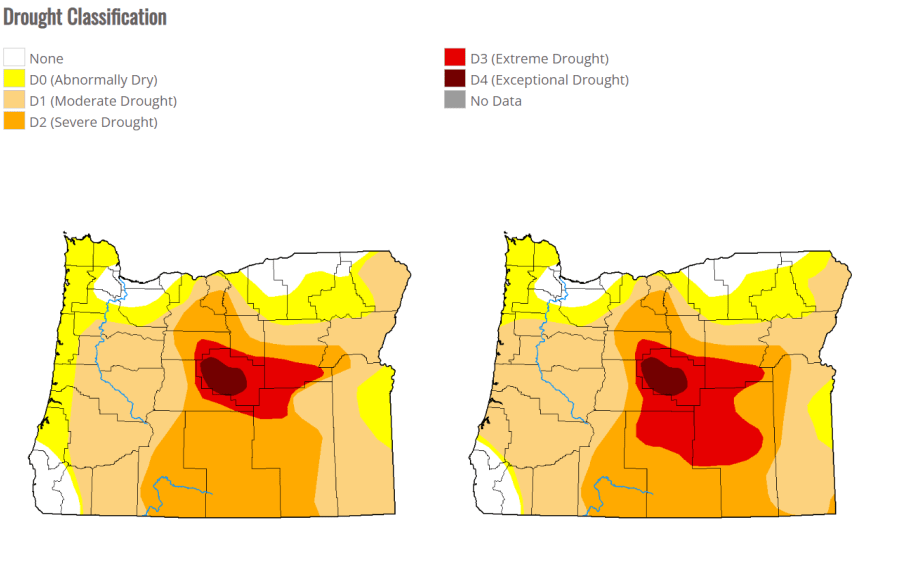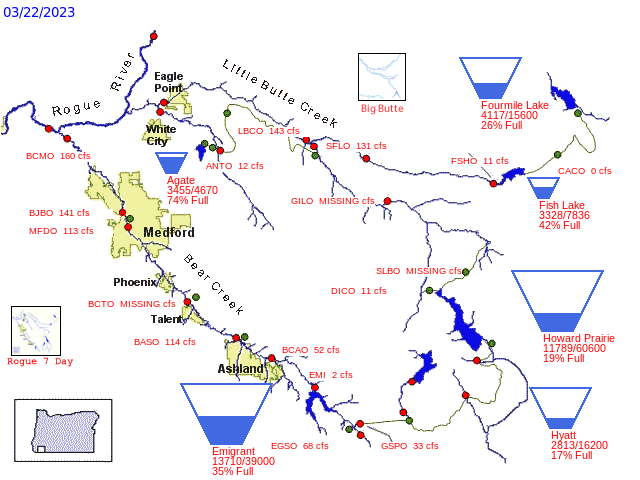PORTLAND, Ore. (KOIN) — While much of Southern and Central Oregon is still in a serious state of drought, the region is seeing its first significant drought improvements for the first time in nearly three years.
Drought-blighted areas of Southern Oregon received enough rain and snowfall in March for experts to notably reduce drought conditions in Lake, Harney and Malheur Counties. The recent precipitation is especially noticeable in northeast Lake County and northwest Harney County, where officials have dropped the long-standing drought classifications from “extreme” to “severe.”
Despite the recent improvement, Oregon state climatologist Larry O’Neill told KOIN 6 News that it would likely take one to several years of ample rain and snow for Southern Oregon to fully recover from its current drought. However, this year’s winter and early spring weather, he said, is “a great start to the recovery.”
“While much of Oregon has missed out on the parade of storms that have hit California, some moisture from those storms have made it to this part of the state, resulting in above average water year precipitation in most of Malheur, Harney, and Lake counties,” O’Neill said. “So why is there still some drought here? It is because the last 3 years have been very dry in the region, with a combination of well below normal precipitation and well above average temperatures and evaporation combining to create some of the driest soil conditions here since at least 1950.”

Low reservoir levels and trickling streamflows are representative of the lack of groundwater in the region, he said. U.S. Bureau of Reclamation data shows that Oregon’s reservoir levels are especially low in Central, Eastern and Southern Oregon. These low water levels have staggered farmers in Southern Oregon and Northern California, who rely on the water supply to irrigate as much as 230,000 acres of farmland annually.

While Southern Oregon is undergoing a mild drought recovery, the most drought-plagued regions of Central Oregon continue to suffer. Conditions in Crook County, which has been in the most severe drought stage since July of 2021, remain unchanged as the Northern Hemisphere approaches its dry season.
“This great rain is still missing central Oregon, where we have the extreme and exceptional drought in Crook and surrounding counties,” O’Neill said. “The snowpack is doing mostly well in the Ochoco Mountains and western Blue Mountains, but the lack of rain has left most of the landscape just as dry as it has been since the current drought cycle started in fall of 2019.”
Conditions may also worsen in the southern Willamette Valley and the central Oregon Cascades in the coming months. O’Neill said that these regions have received 50 to 70% of their normal precipitation for the year. Because the Pacific Northwest is still in its peak wet season, there’s time for conditions to improve. But if dry weather persists, the state will likely see increased wildfire risks this summer.
“In previous years with similar dry conditions going into summer, this region has experienced critically low summer streamflows and early and more severe wildfire seasons, among other impacts,” he said. “While there is time left in the wet season for this region to recover from the current levels of drought, the possibility of another summer of severe drought here is still very much open.”
